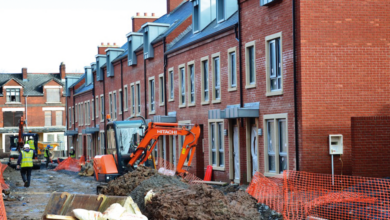Pressing trends for housing
 The Chartered Institute of Housing explains the key drivers for change in housing policy and their impact on householders.
The Chartered Institute of Housing explains the key drivers for change in housing policy and their impact on householders.
There is an intrinsic link between building houses and creating homes which support the development of sustainable communities and strong economies. There is increasingly an awareness of the impact of the housing system on other aspects of public policy and economic growth but it is vital that this awareness grows into strategic actions in coming months, across government. We need government to recognise, through investment and support, the fundamental role that housing plays as a building block in a strong and sustainable society.
In this time of great economic and policy flux, the constant is that our population is set to grow and the needs of households and types of households being formed are changing. 2013 will bring a number of significant challenges for housing, with the Welfare Reform Bill, the social housing reform programme and the implementation of the new Housing Strategy. However, the implications of what a 22 per cent growth by 2023 in households, or a 25 per cent increase in those over 75, mean for all elements of government are merely two of the interesting trends that emerge from even the most cursory glance at the future.
And the future is already here in the form of the under-occupation penalty. Through CIH research, we have shown how Northern Ireland working age housing benefit claimants will be almost twice as likely (62 per cent) to be affected by the ‘bedroom tax’ than the rest of the UK (33 per cent). Indeed over a third of those may be deemed to be under-occupying by two beds or more. This will lead to their housing benefit being reduced by 25 per cent, while at the same time there is a lack of availability of smaller homes for people to opt to move to. Reform is most positive when it occurs in the context of reality.
The correlation between past policies and the current welfare difficulties are only part of the housing story. Financial realities have impacted on house building, house buying and the affordability of housing, right across tenures.
Hidden within statistics are real people. There are those who need to buy their first homes and yet supply and access to finance are ensuring that the age profile of first-time buyers is continuing to rise. This has implications for issues such as who funds the health services in years to come, when less of the population will have equity to draw upon.
As government looks to develop a strong, vibrant economy, it could look to the fact that around 11,000 new units are going to be required every year to meet the 2008-2025 projected need of 189,500. The minimum requirement within new social housing makes up some 2,000 of those 11,000. Beyond the obvious direct and indirect employment opportunities that realising these figures could yield, there are many related gains in regenerating areas, building new communities and, in so doing, attracting inward investment.
Conversations have begun. These can widen. Many people know the impediments to the under-delivery of new homes across all tenures and the imperative of dealing with this. What is more important, many can offer solutions. At a time offering change, let us be radical and reach beyond the challenge to the inherent opportunities.
Email: cecilia.keaveney@cih.org
Tel: 028 9077 8222






